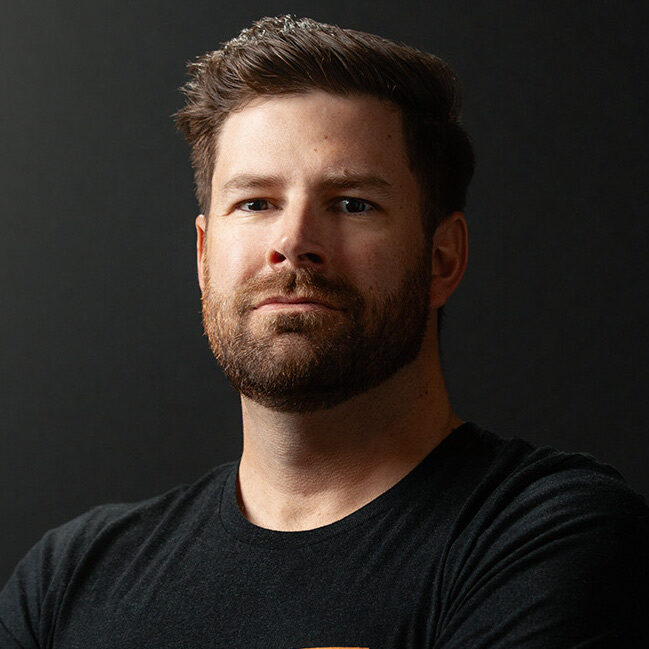Ahead of our highly anticipated annual Construction Tech Conference in July, we have taken the time to engage with three of our esteemed conference sponsors who specialize in preconstruction and field solutions. These companies have demonstrated their commitment to user satisfaction alongside valuable insights into the future trajectory of the built ecosystem. We had the privilege of meeting with three industry leaders: Adam Cisler, Senior Solutions Engineer, Avvir; Julianna Kovacs, Customer Success Manager, Dalux; and Chris Callen, Founder & CEO, PLOT.
BuiltWorlds is thrilled to host representatives from each of these companies that will be present at BuiltWorlds’ 2023 Construction Tech Conference. These individuals will be available to delve into their group’s latest achievements and advancements, discuss emerging trends within AEC, and build connections that will flourish beyond our conference. Below will be a brief description of Avvir, Dalux, and PLOT, along with vital insights from each interviewee.
Want to Connect With Industry Leaders Within the Built World?
Avvir offers an automated risk platform that empowers a project's team with control of automated schedule tracking, cost and earned value analysis, installation issue detection, and an updated BIM. Their platform helps users to identify mistakes before something has the opportunity to go wrong, reducing imminent costly reworks and delays. With powerful algorithms, Avvir is able to compare a project's BIM to reality, determining what is built and if it is built in place.
Senior Solutions Engineer

Adam has worked within the AEC field for nearly two decades, beginning his time in the space as a carpenter and emerging today as a Senior Solutions Engineer. Prior to his role at Avvir, Cisler worked at GLY Construction for almost ten years. It is clear that he has strong expertise within the space and will continue to serve as a driver for innovation within the industry.
Although Cisler may be new to Avvir, he has strong footing into its key functions and offerings for users. There are many solutions in the space that are associated risk management and preconstruction, but Avvir is a standout solution with distinct offerings. Adam noted that the usability and functionality within the platform is far beyond many competitors within the industry.
“We aren't just one more software. We are actually working with and integrating existing software and enabling our clients to leverage the data they already have on their projects… The fact that Avvir started addressing the hardest problem, which is analyzing point clouds with AI to extract meaningful data, sets us apart from a lot of our competitors.” Adam Cisler, Avvir
Avvir is focused on the future and is currently expanding their deviation analysis, which will further reduce waste and save valuable resources all while delivering faster results. There are many favorable outcomes that will occur within the platform as these functions continue to shift, widen, and develop further.
“This ability to do deviation analysis is saving lots of headache out in the field by indicating and catching problems before they’re a problem. We are all about effectively allowing project teams that we're working with to focus on solving issues rather than finding them, so we're helping teams find these roadblocks and enabling them to do what they do.” Adam Cisler, Avvir
PLOT provides a digital workspace that has the ability to manage a project's worksite. Managing a jobsite from preconstruction to its completion is no easy feat and PLOT's tools are designed to ease this chaos. Enabling streamlined communication is at the heart of their operations, with tools promoting delivery management, logistics management, and inter-company communication channels.
Founder & CEO

Chris is no stranger to the AEC industry, as he was born and raised within the space. He has a nuanced understanding of growth within the built world and is looking to further bridge the gap between construction and technology by developing innovative solutions. He collaborated with High Alpha Innovation in late 2021 to create PLOT, molding what current software in the market into a more accessible and sleek form of jobsite coordination.
PLOT began as a logistics and delivery management platform by timing the delivery of project materials from truck-to-site. They have since grown alongside industry demand and shifted their step towards delivery management tools within the space, with Callen noting the importance of communication between stakeholders.
“We have seen that there is a massive need to go further up the supply chain, maybe not tracking materials as some procurement solutions do, but really focusing on coordination between subcontractor and general contractor on the timing of ordering materials in a timely manner for the project. Typically, procurement logs are run in spreadsheets, email chains, or a vast variety of other places, but we're connecting a gap that exists right now between the submittal approval process and actual delivery on site. As we focus on delivery management, this lead time module fits hand in glove with the existing tools so that we can provide more value to the industry.” Chris Callen, PLOT
PLOT recently announced the closing of a $2M investment round, introducing the conversation around future development and enhancements that are going to be made within the company. Callen noted the importance of increasing the bandwidth of tools for jobsite coordination and scaling them to be a more approachable solution for smaller companies, and subcontractors.
When discussing the rise of new technologies within the space, Callen brought up his deep understanding of the industry at large and plethora of experience with tech throughout his time in the space. He acknowledged that workflow is fundamental for all softwares, whether they are emerging within the space or are already established and later welcomed new tech solutions joining the AEC community.
“I believe the industry is in big need of some of these tools and that's the major focus that our contractor partners. They have to keep us in check with when technology is of adequate maturity to be implemented and not before because we are building the built world and that requires perfection. We don't have that fast-fail philosophy that a lot of the other industries enjoy. So while I welcome [emerging technology], I do think that we have to take a metered approach.” Chris Callen, PLOT
Dalux was founded in Denmark in 2005 by brothers, Bent and Torben Dalgaard, with the goal of making the complex construction process simple. Their user-friendly tools and technology empower users with the ability to view 2D content in context with 3D BIM models. Dalux is currently used within over 147 countries and hosts over 700,000 users globally.
Julianna Kovacs
Customer Success Manager

Julianna has over 14 years of experience within BIM and Engineering Software Services, beginning with her Bachelor of Science in Engineering Management from the Illinois Institute of Technology. Prior to her work as a Customer Success Manager at Dalux, Kovacs lead BIM project services and solutions as a Solutions Engineer for Neilsoft.
We began our discussion with how overwhelming it is for a project managers when they utilize tools from different preconstruction and project site solutions. Kovacs began to discuss the importance of support for teams within each segment of the construction process and that Dalux is a solution that simplifies this otherwise jumbled space.
Kovacs tackles future development primarily through user response and is unique with the amount of in-house developers on their team to keep up with this feedback.
“We continuously develop updates based on customer feedback and industry needs, but we really work with our users to see what enhancements they would value. One thing that I think is cool about Dalux is that 50% of our staff are always software developers. All of our development is done at headquarters and we don't outsource anything and we have about 10 to 12 new releases per year.” Julianna Kovacs, Dalux
With Dalux beginning their operations in Europe, they have had to broaden their cultural and systemic understanding as they expand into new areas around the world. While the built world may seem uniform when it comes to building, each area has a particular set of regulations that must be meticulously followed.
“A larger driver for us is being interconnected with where we offer our software. We give local support and service so that we can better understand and connect with our customers in their region, making sure we give them the service they need in the local language and also the standards and regulations for each given area.” Julianna Kovacs, Dalux




Discussion
Be the first to leave a comment.
You must be a member of the BuiltWorlds community to join the discussion.